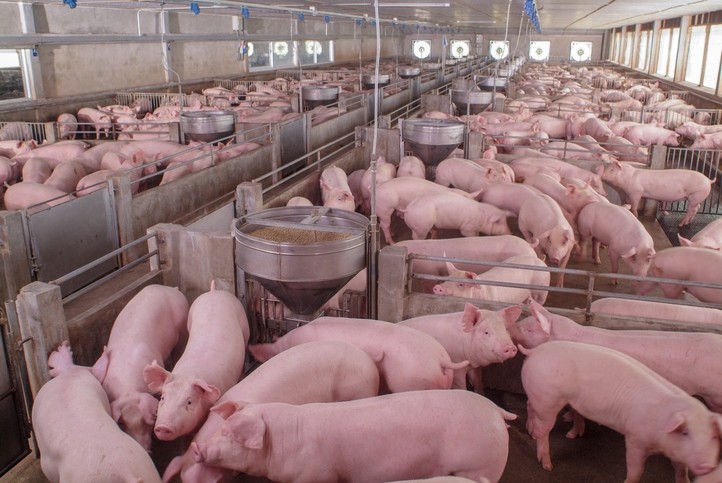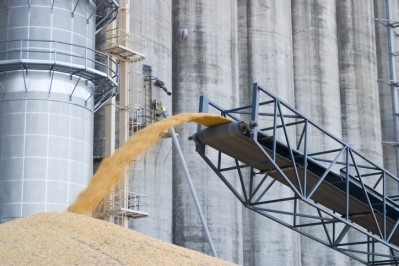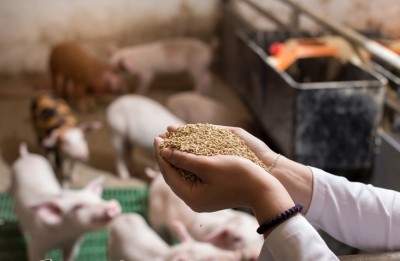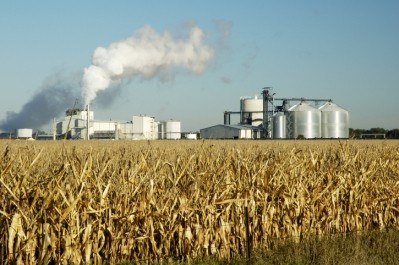Irish swine to dine on US DDGS

One of Ireland’s major feed mills has started including 15% DDGS in swine feed formulations on the back of efforts by the USGC to promote the benefits of this feed ingredient in swine diets.
“Almost all feed mills are incorporating DDGS into dairy and beef cattle formulations, but the benefits of using DDGS in monogastric diets is relatively unknown in Ireland, although information suggests that inclusion rates of 15-20% have proven to be highly beneficial in certain rations,” Reece Cannady, manager of global trade at the US Grains Council, told FeedNavigator.
More bang for your buck
Explaining why the inclusion of DDGS in rations is beneficial to feed mills, Cannady said: “More than anything, it gives our customers another option. Everyone knows that prices fluctuate and having the option to switch ingredients is always beneficial – it can only yield potential savings.”
As a source of energy and protein, DDGS can replace anything that is supplying those two components in a ration.
While a direct substitution might not necessarily result in a cost saving, Cannady suggests that if producers can factor in the added nutritional value DDGS offers, the economics start to look more attractive.
“The interesting thing about DDGS is that it can be quite difficult to price, as the amino acid makeup of the product is actually favorable, but most try to market it on a ‘profat’ basis. Research we’ve done suggests that DDGS is usually marketed at 80% of its actual economic value. With current industry dynamics pressing profit margins, a potential 20% economic saving on DDGS is significant,” he explained.
“That’s not to say that competing ingredients couldn’t provide better savings depending on price structure, but it does mean that, even if it doesn’t look like DDGS is pricing in to a ration on the surface, it may be worth a second look at some of the extensive research done on the product—you may be getting more bang for your buck than you realize.”
Ireland: ‘a consistent buyer of DDGS’
Ireland purchased just under 400,000 metric tons of US DDGS in 2018, valued at $91m, and this additional commitment will add another 75,000 metric tons (or $17.2m) to the country’s DDGS import requirement.
For historical reasons, most imported DDGS has been destined for Ireland’s ruminant feed industry.
Earlier this year, the USGC engaged the Irish feed industry to assess the DDGS market and potential effects of Brexit. The Council discovered that while DDGS rates in ruminants were on a par with the US, inclusion rates in monogastric diets lagged.
This assessment led to direct work with the swine industry to answer questions related to nutrition and to encourage inclusion in rations. As a result, the feed mill, [which the USGC declined to name], a producer of 500,000 tons of pig feed annually, decided to change its feed formula.
As other Irish feed mills switch, the US Grains Council predicts that potential DDGS exports for commercial swine feed alone in Ireland could reach 200,000 tons, valued at $46m.
A global promotional drive
It’s not just in Ireland that the use of DDGS is growing thanks to the efforts of the US Grains Council.
“We work around the world on DDGS promotion,” said Cannady. “Recent attention has been on Southeast Asia, as they have emerged as a major buyer of US DDGS. Also, our engagement in Latin America and Europe has ramped up recently. At the end of the day, the US Grains Council engages markets where we see potential synergy. Whether it be a short or long-term engagement, the idea is to help a market develop via education and investment of resource.”
He explained that the reason the US is keen to find export markets for DDGS is that it increases margins for US ethanol.
“DDGS will always be fed domestically if it doesn’t get exported – demand is not a huge concern. Market development can be achieved by understanding logistical and tariff and non-tariff trade barriers in each region and picking spots where the barriers make it favorable to import DDGS in favor of other energy and protein sources.”












